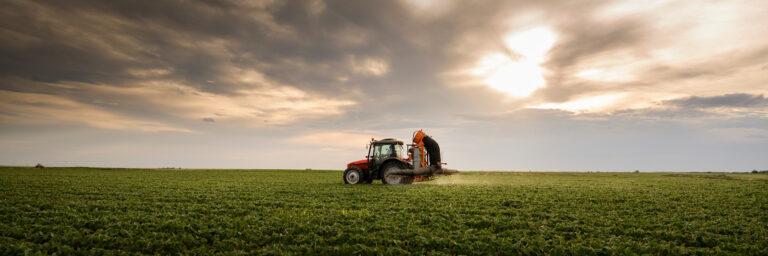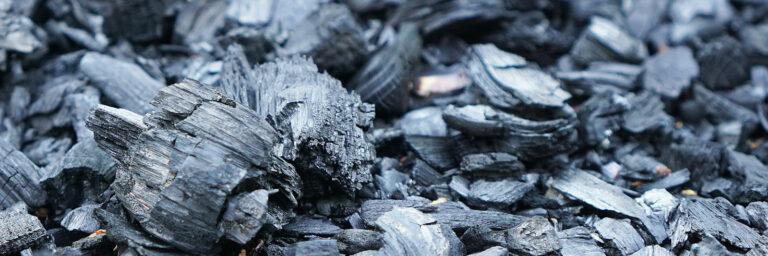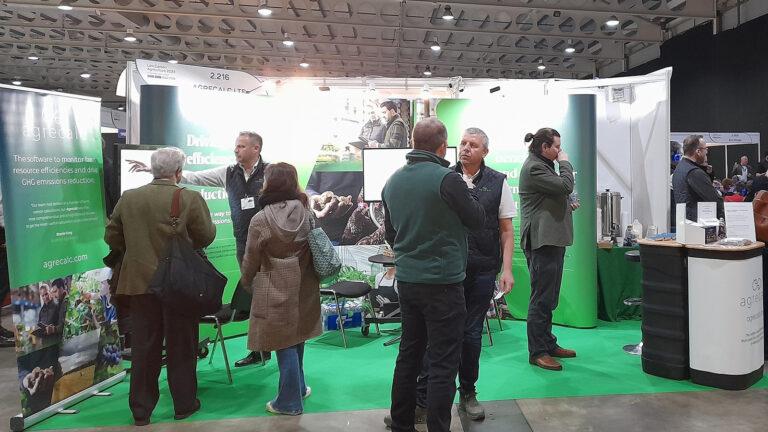
April Business Update: SRUC
After two years of operation as a Limited Company, Agrecalc became part of Scotland’s Rural College (SRUC) as of 1 April 2025.
A few months ago, we spoke to Northern Irish farmer, John Gilliland, Professor of Practice at Queen’s University Belfast, about the success of ARCZero project in Northern Ireland. John is also Strategic Advisor, Practitioner & Innovator in Climate Smart Farming, Land Management & Policy Development for AHDB and QMS. Details about the ARCZero project can be found in our case study, and in the interview John was kind to grant us last year.
John has also shared with us some other innovative approaches that he’s either implemented on his farm, Brook Hall Estate & Gardens in Northern Ireland, or is in the process of implementing, with the goal of establishing a living lab on the premises.
One thing we spoke about is the use of coppiced willow in cattle grazing, and the effect this has had on reductions in methane.
A: “John, how did the idea of using coppiced willow come about?”
JG: “It came from three different directions. I already had willow coppice on my farm because I was renewable heat farmer. We had gone through a crisis because of the scandal of the renewable heat scheme in Northern Ireland, and I was looking for a solution – what do I do with my willows?
“The second direction came from a visit 4 years ago, just before COVID. I was invited out to Australia by the Australian Government’s organisation, CSIRO, which stands for the Commonwealth Science Industry Research Organisation. It is the Australia’s statutory research body. I particularly went out to look at their work of feeding red seaweed, asparagopsis, to cattle to reduce methane emissions.
“The farm where they did the original trials is in a place called Townsville in Queensland. I travelled there to see the cattle, in respiration chambers, just as SRUC has in the GreenShed cow unit in Bush estate in Penicuik, where the cattle were being fed the red seaweed to reduce methane emissions.
“What interested me even more was a trail in the neighbouring paddock. Now you have to remember the definition of an Australian paddock. A paddock in Irish terms is about 1 hectare in size. A paddock in Australian times is 100 hectares. In this 100-hectare paddock was a silvopasture of grazing trees which the cattle were allowed to graze.”
"I love biological solutions. And I always say the 20th century was about chemistry. The 21st century will be about biology and biological solutions."
John Gilliland, Professor of Practice, Queens University Belfast
JG: “I asked them what they meant by ‘grazing the trees’ and they responded that it was a semi-tropical tree called Leucaena, which has two claims to fame. One is that it’s leguminous: it would take nitrogen out of the sky and fertilise the grass around it. But the second thing is they found that when the cattle grazed the Leucaena leaves, they got a 30% reduction in methane from those cattle.
“I love biological solutions. And I always say the 20th century was about chemistry. The 21st century will be about biology and biological solutions.
“The third direction came from just after the time I was appointed Professor of practice at Queen’s University Belfast (QUB). At an event in QUB, I found out about a piece of research led by the QUB scientist Katerina Theodoridou.
“What her team had looked at was the investigation on whether there were any indigenous plants in Ireland, that when grazed would reduce methane in cattle, because red seaweed from Australia needs a special type of warm water which we have little of, off the Irish coast.
“There are now chemical supplements as feed additives, approved and on the UK market, having passed regulatory approval, such as DSM’s Bovaer, to reduce methane from cattle. But Katerina’s team went looking for indigenous biological solutions and tested about 200 different plant species leaves in vitro in the lab. And one particular plant came out top and that was willow, because it has naturally very high condensed tannins in the leaf. And it is the condensed tannins that interrupt the formation of methane in the rumen of a cow.
“I said to the University: ‘Stop doing it in vitro. Why don’t we do it in vivo?’ The response I got is that they didn’t know anyone who’s mad enough to have a feed of willows. And I said, ‘You’re looking at them’.
“I had an interest in the process, and I also knew I needed to reintroduce livestock back onto my farm. I have 30 years of knowledge of willow production, and I don’t want to give it up – is there a soft landing? Can I have a halfway house?”
“I said to the University: ‘Stop doing it in vitro. Why don't we do it in vivo?’ The response I got is that they didn’t know anyone who’s mad enough to have a feed of willows. And I said, ‘You're looking at them’."
John Gilliland, Professor of Practice, Queens University Belfast
JG: “In 2022, we, in partnership with QUB, AFBI* and the Foyle Food Group decided to do a replicated grazing trial, two cohorts of animals seven weeks each, one on perennial ryegrass and one on willow. Recently coppiced, this particular field of willow stools were 28 years old. We harvested the field in March, took it down to 10 centimetres off the ground and then by the end of May, the regrowth of the willow was one metre tall.
“We put seven-year-old dairy cross beef steers into the willow, and we put the same into the grass. We were loaned two green feed units for measuring methane by AFBI, one in the willow, one on the grass. And we had a PhD student from Queens University, Josh Thompson, involved in the project. And after seven weeks we rotated the cattle.
“At the end of the year, we totalled up the numbers. We had a 27% reduction in methane yield of the cattle on the willow treatment compared to grass. Also, our willows had no fertiliser on them. We haven’t used Agrecalc on this project yet, but if we were to put it through Agrecalc, the overall footprint reduction would have been far better because we would have had a reduction in nitrous oxide emissions as well as a reduction of methane emissions.
“This year, 2023, we didn’t have access to the green feed units, but what we decided to do was to do a more long-term trial with a bigger cohort. The first time around we did it with 7 animals. This time we did it with 20 animals, and for 16 weeks.
“We’ve just finished that, and lo and behold even with the awful weather the animals did well with no negative side effects. What we are looking to do is turn my farm into a proper living lab to secure philanthropic funding to do a 15-year project on three different grazing trials, one on perennial ryegrass and clover, one on multi species swards within a silvopasture, one on multi species swards, silvopasture and with grazing willow trees.
“We want answers to many questions: what’s the persistence? How does it work? How do the animals perform? But also, what happens to soil sequestration? What happens to soil biology, the reduction of ammonia? We really want to look at the totality.
“The vision and all of this was enabled because of what we did in ARCZero, this is like a spin-out of ARCZero. I’m trying to see what is possible, because for a lot of farmers, planting willows is alien to them. It’s a real cultural barrier, but you know, a lot of fields have what we call runoff risk areas. Could we plant willows so that we improve water quality, but at the same time let the animals can graze them in the summer? You get a double win.”
JG: “In Northern Ireland, AFBI have been researching the benefits to water quality of using willows as riparian strips. What we want to do is put the science around it and actually look at an integrated landscape where food production, livestock production, is still core, but we’re looking at a more complex land use.
“The silvopasture is a more complex system. But when you go and measure the science and look at the indices, look at the metrics coming through, whether it’s soil organic carbon, whether it’s soil biology, whether it’s methane emissions, there’s a halfway house. Cattle were browsers first and grazers second. And it is only modern agriculture has turned them into grazers.
“What is interesting is that the cattle are very selective. Do they eat willow? They clean willow! They’re just like locusts – once they get a taste for it, they’ll not eat the grass. I’ve seen us putting them into willow regrowth, willow that’s two metres tall and coming back three days later and there’s nothing left for a couple of sticks sticking up.
“It’s just extraordinary. And then the willow regrows; we believe we could get two grazings a year out of four blocks of willows. Every time the cattle get one block and then you rotate them to the next block, and you’ve always got three blocks recovering.”
“The big debate out there – it’s either livestock or it’s trees. And in all the work we’re seeing is actually neither of those is the right solution. What the right solution is – it’s grazing silvopastures”, concludes John.
*AFBI have contacted us to state: “We would prefer that this work was referred to as a pilot project as replication wasn’t as strong as it could or should have been. From the published science abstract below, we observed no significant difference in the methane production (g) per kg LWG between grass and willow treatment (Grass 0.27 vs 0.30, P=0.555). While willow did reduce gross emissions (g/d), there were higher emissions per live weight gain (LWG) – which is arguably more important than g/d. This is a trade-off, as 24 month slaughter age is hugely effective at reducing gross emissions. This is an interesting project and willows may have a role and warrant much more research.”
Information on setting up a willow coppice block for fodder can be found on the New Zealand Poplar & Willow Research trust.
Always remember that the species you plant need to be indigenous to the region and not represent a danger to the local eco-system, in the form of invasive species.
AFBI and Teagasc have some good information in this leaflet.
The extract and findings from the study can be found here.

After two years of operation as a Limited Company, Agrecalc became part of Scotland’s Rural College (SRUC) as of 1 April 2025.

Biochar is a carbon-rich material produced by pyrolysing biomass, which offers a variety of potential agronomic benefits. In this guest article, Black Bull Biochar discusses how these effects work together to bolster productivity, sustainability, and resilience in farming.

The Agrecalc team is looking forward to welcoming you at our stand (2.844) at this year’s Low Carbon Agriculture Show, taking place on March 5 and 6, at NAEC Stoneleigh near Kenilworth.